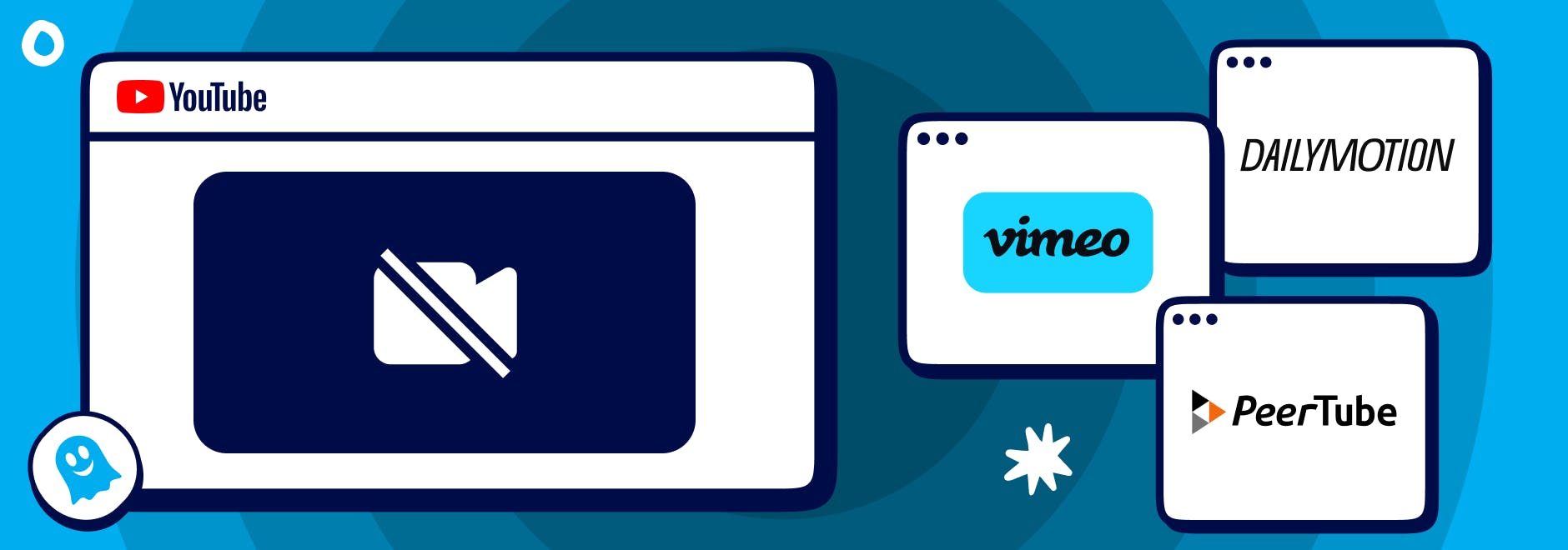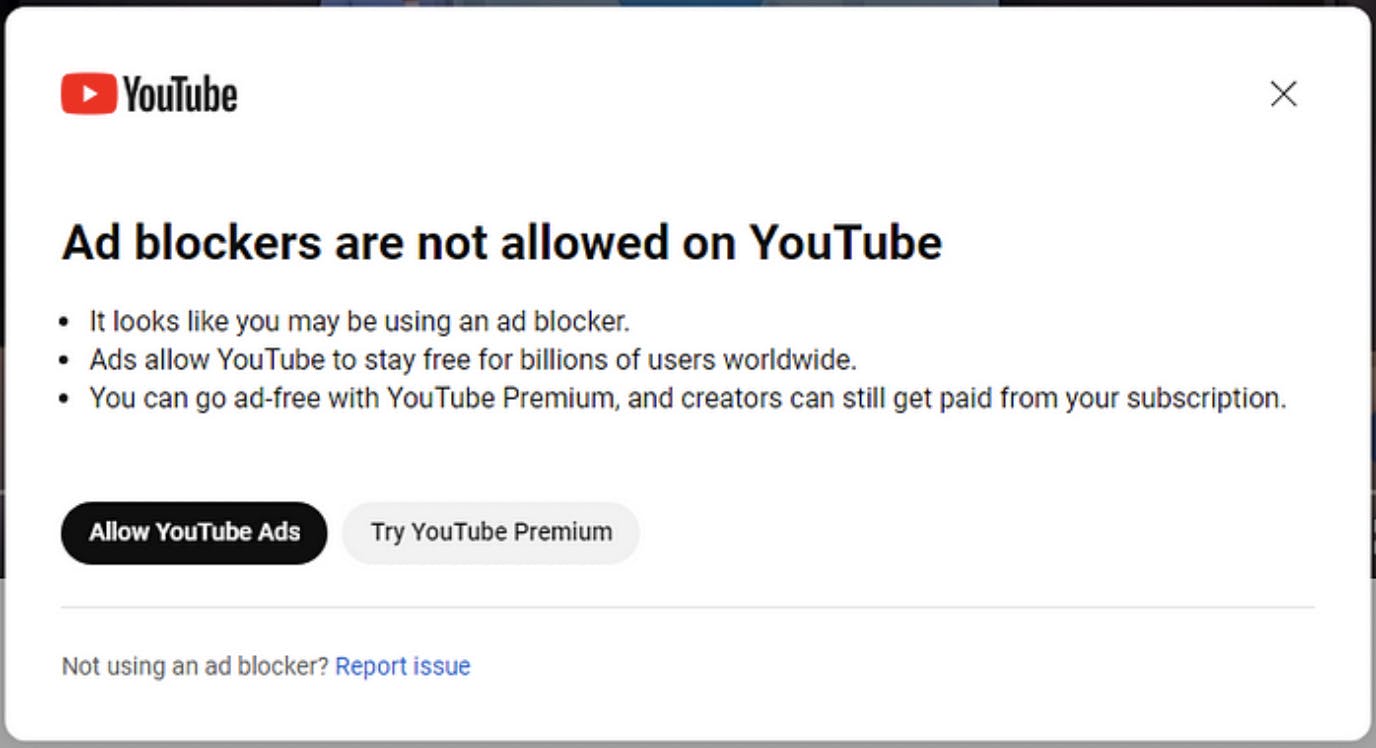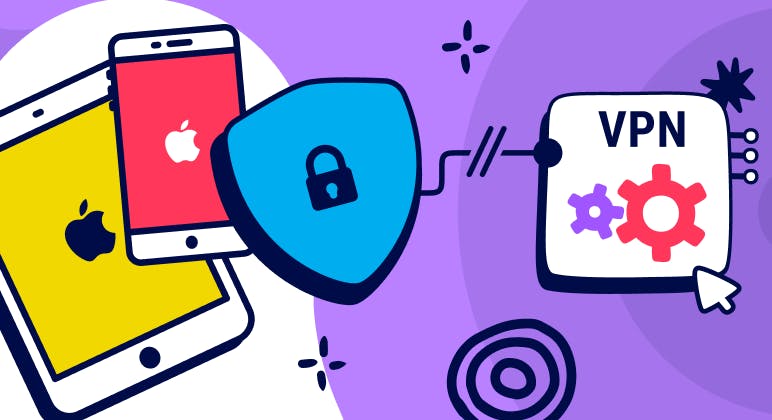Guide
Top YouTube Alternatives
Key Points:
- YouTube’s increasing use of adblocker walls has led users to seek alternative video platforms that are more accommodating to adblockers like Ghostery.
- Top YouTube alternatives include Vimeo, Dailymotion, and PeerTube.
- Switching to platforms that make blocking ads easier lets viewers watch content without ads and still have high-quality options.

Navigating Through Adblocker Walls
What are adblock walls?
Adblock walls are digital barriers that websites use to restrict access to their content for users who have adblocking software enabled. These walls create two distinct user experiences based on whether an ad blocker is detected. Users without ad blockers can freely browse the website's content without interruption. In contrast, those with detected active ad blockers encounter annoying pop-up messages when they try to access the site.
These anti-adblock pop-ups typically present users with a few options to proceed. The most common requests are for the user to either disable their ad blocker entirely or whitelist the website, which means adding it to a list of approved sites that are exempt from the ad blocker's filters.
Some websites offer alternative ways to gain ad-free access, such as asking users to subscribe to a newsletter or take another action that supports the site. If the user does not comply with any of these requests, the adblock wall prevents them from accessing the content, essentially locking them out of the site.
Website publishers implement adblock walls as a strategy to recoup the advertising revenue they lose due to the widespread use of adblocking software. Publishers aim to mitigate the financial impact of ad blockers and sustain their online business model by presenting users with a choice to either allow ads or find another way to support the site.
According to Ad-Shield, nearly two-thirds of ad block users choose to disable their ad blockers in order to view a website when confronted with strict adblock walls that offer no alternative access to content.
The Challenge of Adblocker Walls on YouTube
YouTube, the leading video sharing platform, has seen a surge in adblocker walls in recent years. These anti-adblock messages block users who use adblockers.
Specifically, around October 2023, YouTube implemented a new anti-adblock measure that displays a notice to many viewers using ad blocking tools. This forced users to disable their adblocker in order to view videos.

The presence of adblocker walls on YouTube can be a significant hindrance. Adblocker walls frustrate users who value ad-free viewing. They often demand disabling adblockers or paying for premium access, driving many to seek more adblocker-friendly workarounds.
Ad blockers like Ghostery work hard to give users a cleaner YouTube experience, even though YouTube makes it very difficult. Ghostery, among other ad blockers, constantly updates its software to block YouTube's newest ad methods, striving to enhance user privacy and reduce unwanted interruptions.
The fight against YouTube ads shows how determined ad blockers are to improve the user experience, despite YouTube's huge reach. But it also reveals why some people prefer YouTube alternatives that work better with ad blockers. These other platforms provide an escape from constant ads — or at least allow you to block them. They make an intriguing option for those disillusioned with YouTube's ad-centric model.
Leaving YouTube Can Be Frustrating
YouTube stands as the colossus of online video platforms, offering an unparalleled level of personalization and content discovery that keeps users coming back for more. Its sophisticated algorithms excel at recommending videos that align with individual interests, making it a treasure trove of entertainment, educational content, and everything in between.
The platform's ubiquity is another key factor: Almost everyone is on YouTube, from independent creators to major brands, ensuring a vast and varied content library. This, combined with its high visibility in Google search results and the convenience of use across devices, makes YouTube a hard habit to break. The platform's integration across websites and social media further cements its position as the go-to video service, offering a seamless viewing experience that's hard to find elsewhere.
However, YouTube's dominance comes with significant privacy concerns. The platform, owned by Google, collects extensive data on viewing habits, which is then amalgamated with information gathered from other Google services. This data integration forms part of Google's broader strategy to profile users for targeted advertising, raising questions about the extent of personal data being harvested and how it's used.
For users concerned about their digital footprint, this aspect of YouTube's service is a glaring downside. The fact that one's viewing preferences on YouTube can influence the ads they see across the entire Google ecosystem underscores the pervasive nature of Google's data collection practices, prompting some users to seek alternatives that respect their privacy and allow for adblocking capabilities.
What about creators?
Creators who post videos on sites other than YouTube make a clear statement about their values. They show that they care about privacy, controlling their data, and avoiding intrusive ads. This choice is not easy, because it means finding a site that matches their principles and connecting with a new audience that may be very different from YouTube's huge user base.
When people make thoughtful choices about where they post and watch videos, they can have a real impact on their own lives and the larger digital world, showing their support for the values that matter to them.
Why Look for YouTube Alternatives?
While YouTube remains the go-to platform for well over 2 billion users, trying other platforms opens up new possibilities. These alternatives often have unique features, niche content, and embrace a more user-friendly approach to adblocking. Venturing beyond YouTube lets viewers find new creators, enjoy diverse content, and avoid adblocker walls.
Adblocker-friendly platforms prioritize user experience by allowing adblockers. These alternatives create a more enjoyable, immersive environment for consuming content by supporting (or turning a blind eye) rather than fighting adblockers.
Top YouTube Alternatives and Competitors
Vimeo: A Creative Professional's Haven
Vimeo caters to creative professionals and artists by focusing on high-quality, original content for 200+ million members worldwide.
Vimeo does not show ads. Instead, it charges users for premium memberships. Vimeo focuses on providing a high-end, professional experience for its users and generates revenue through subscription fees and enterprise services. The service's strict content policy prohibits many types of videos that YouTube allows, such as those promoting commercial services.
In contrast, YouTube relies on advertising revenue and allows creators to monetize their videos through ads, sponsorships, and other means as part of the YouTube Partner Program. YouTube has a more open content policy, allowing diverse content as long as it adheres to their guidelines.
The two platforms have different business models: Vimeo prioritizes a premium experience and subscription revenue, while YouTube focuses on advertising income and hosts a wider variety of content.
Dailymotion: Content with Fewer Restrictions
Dailymotion, another popular video-sharing platform, has gained traction as a YouTube alternative due to its content offerings and fewer restrictions on adblocker usage. The platform hosts a wide range of videos, from user-generated content to professional productions, catering to various interests and niches. Dailymotion's compatibility with adblockers ensures that viewers can enjoy their favorite content without the constant disruption of advertisements.
The service does have ads. Dailymotion does not have a subscription offering to avoid ads. Their ads are easily blocked with adblocker's like Ghostery.
While YouTube is known for its vast library of user-generated content, Dailymotion places more emphasis on professionally produced content. Currently, Dailymotion's max resolution is 1080p, while YouTube can go up to 4K.
PeerTube: Decentralized Video Hosting
PeerTube offers a unique, decentralized approach to video hosting by distributing hosting across a network of servers. PeerTube does not have ads and respects user privacy. Their community-driven content and open-source technology appeal to those seeking an alternative to centralized platforms and YouTube-type sites.
What about Twitch?
Twitch, primarily known for its gaming-focused live streams, has emerged as a YouTube-like website for those seeking real-time content. On average, the service has over 7 million channels streaming each month.
Twitch's unique blend of live gameplay, interactive chat, and a vibrant community makes it a go-to destination for gaming and live stream enthusiasts.
Twitch has measures to make ads difficult to block. Twitch ensures that typical ad blocking methods are ineffective by embedding ads directly into the video stream. This approach has led some to claim that Twitch ads are impossible to block.
The live streaming platform has also developed techniques to detect and bypass ad blockers, further complicating efforts to avoid ads on the platform. Popular browser ad-blocking extensions like AdBlock, uBlock Origin, and Ghostery struggle to hide Twitch ads effectively.
Some users have shared suggestions on GitHub for bypassing Twitch ads without a subscription. The alternative is to cave in and pay for a Twitch subscription to eliminate ads.
Making the Switch: What You Need to Know
Switching from YouTube to an alternative platform may seem daunting, but you can make the transition less painful with the right approach. Here are some suggestions.
- First, identify the content genres and creators that align with your interests.
- Explore different platforms' features and communities to find the best fit for your viewing preferences. Consider factors like video quality, user interface, and mobile app availability.
- To make the switch easier, start by following your favorite creators on the new platform and engaging with their content.
- Participate in discussions, leave comments, and share videos to become an active member of the community. As you discover new creators and content, your attachment to the alternative platform will grow, making it easier to leave YouTube behind.
Remember, change takes time, and it's okay to use multiple platforms during the transition period. Gradually shift your viewing habits towards the alternative platform, and before you know it, you'll have successfully made the switch.
Content Variety and Quality Across Alternatives
When you venture into the world of YouTube alternatives, it's natural to wonder about the content variety and quality available on these platforms. While YouTube sites boast an unparalleled breadth of content, alternative platforms often excel in specific niches or genres. For example, Vimeo is renowned for its high-quality, artistic content, while Twitch dominates the live streaming space. You can discover a rich ecosystem of content that caters to your specific interests by exploring different alternatives.
Don't be afraid to dive into the unique offerings of each platform. Vimeo's curated selection of creative works can inspire and engage you, while Twitch's interactive live streams can provide hours of entertainment and community interaction. Other YouTube-type sites like Dailymotion and PeerTube offer a mix of user-generated and professional content, ensuring that you'll always find something new and exciting to watch.
As you explore YouTube competitors, keep an open mind and be willing to discover new creators and content formats. You may be surprised by the creativity you encounter on these platforms, and you might even find your new favorite channels or communities.
Enhancing Your Viewing Experience
To further enhance your ad-free viewing experience on alternative platforms, consider leveraging additional tools and techniques. Adblockers, such as Ghostery, can help block ads and trackers on many sites, including alternative YouTube sites. These browser extensions work by identifying and blocking ad-serving domains, preventing ads from loading on web pages.
When using ad blockers or other tools, be mindful that content creators often rely on ad revenue to support their work. Consider whitelisting sites you frequently visit or support creators through alternative means, such as subscriptions, donations, or merchandise purchases.
Embracing other YouTube-type sites doesn't mean compromising on the quality or variety of content you consume. Many alternative platforms offer a wealth of engaging and informative videos across various genres. From educational content to entertainment and niche interests, there's something for everyone.
You can create a personalized viewing experience that rivals what YouTube offers by exploring these platforms and curating your subscriptions and playlists.
Bottom Line
Since adblocker walls and anti-adblock notices are becoming increasingly common on YouTube, exploring alternative YouTube sites is a smart move for viewers. You can take control of your viewing by trying YouTube competitors like Vimeo, Dailymotion, and PeerTube.
Your viewing choices matter. When you support platforms and creators, you help build an online video world that puts users first. Explore the alternatives and enjoy content on your terms.
Have questions? Get in touch. We’re always happy to help.

